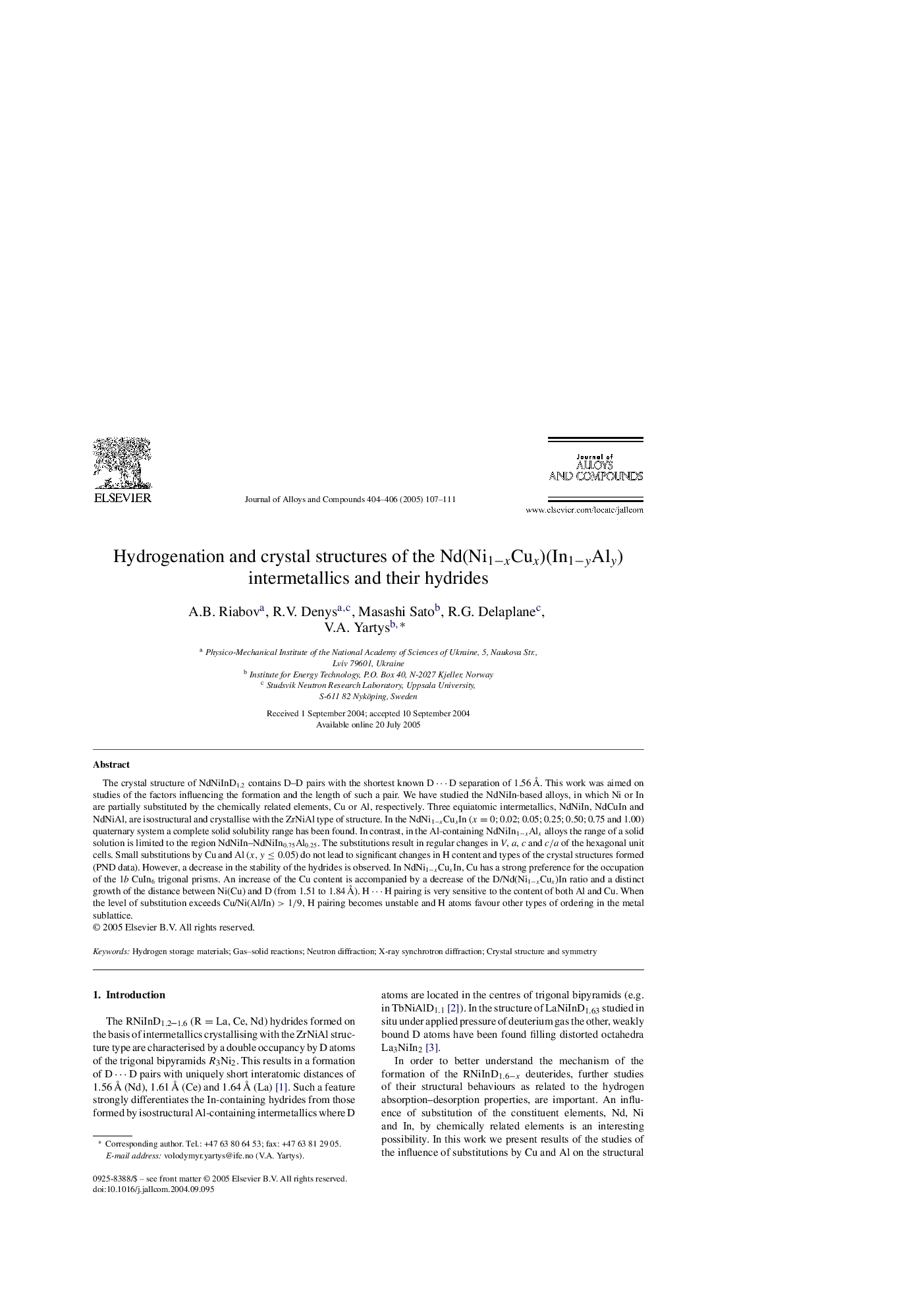| Article ID | Journal | Published Year | Pages | File Type |
|---|---|---|---|---|
| 9803174 | Journal of Alloys and Compounds | 2005 | 5 Pages |
Abstract
The crystal structure of NdNiInD1.2 contains D-D pairs with the shortest known Dâ¯D separation of 1.56âÃ
. This work was aimed on studies of the factors influencing the formation and the length of such a pair. We have studied the NdNiIn-based alloys, in which Ni or In are partially substituted by the chemically related elements, Cu or Al, respectively. Three equiatomic intermetallics, NdNiIn, NdCuIn and NdNiAl, are isostructural and crystallise with the ZrNiAl type of structure. In the NdNi1âxCuxIn (x=0; 0.02; 0.05; 0.25; 0.50; 0.75 and 1.00) quaternary system a complete solid solubility range has been found. In contrast, in the Al-containing NdNiIn1âxAlx alloys the range of a solid solution is limited to the region NdNiIn-NdNiIn0.75Al0.25. The substitutions result in regular changes in V, a, c and c/a of the hexagonal unit cells. Small substitutions by Cu and Al (x,yâ¤0.05) do not lead to significant changes in H content and types of the crystal structures formed (PND data). However, a decrease in the stability of the hydrides is observed. In NdNi1âxCuxIn, Cu has a strong preference for the occupation of the 1b CuIn6 trigonal prisms. An increase of the Cu content is accompanied by a decrease of the D/Nd(Ni1âxCux)In ratio and a distinct growth of the distance between Ni(Cu) and D (from 1.51 to 1.84âÃ
). Hâ¯H pairing is very sensitive to the content of both Al and Cu. When the level of substitution exceeds Cu/Ni(Al/In)>1/9, H pairing becomes unstable and H atoms favour other types of ordering in the metal sublattice.
Keywords
Related Topics
Physical Sciences and Engineering
Materials Science
Metals and Alloys
Authors
A.B. Riabov, R.V. Denys, Masashi Sato, R.G. Delaplane, V.A. Yartys,
